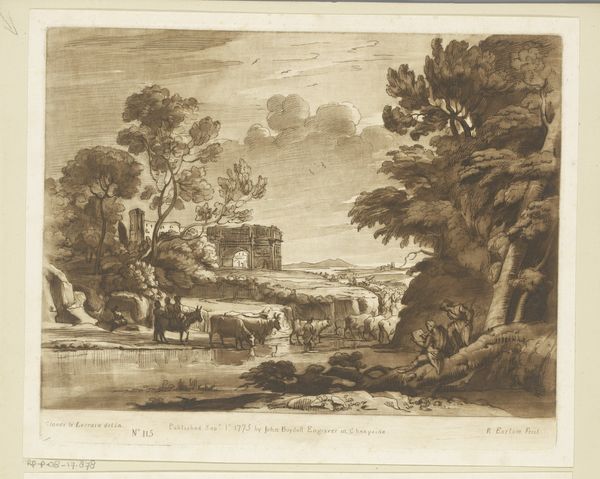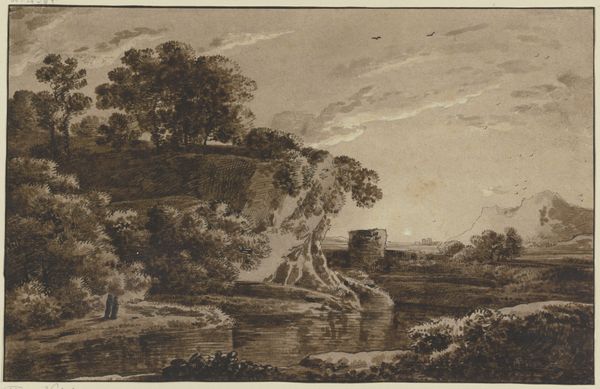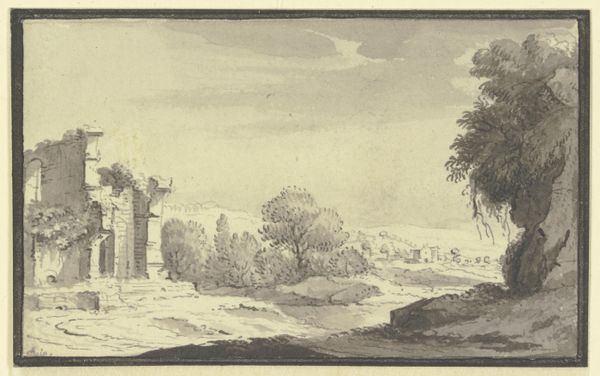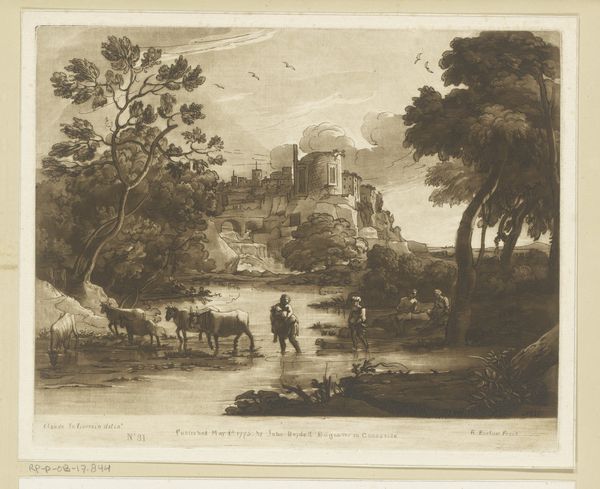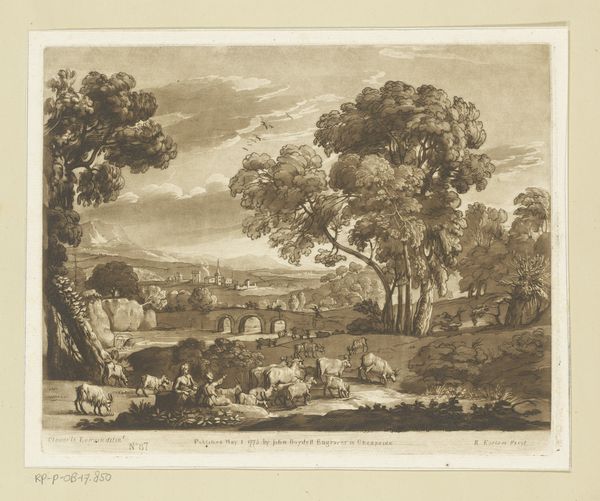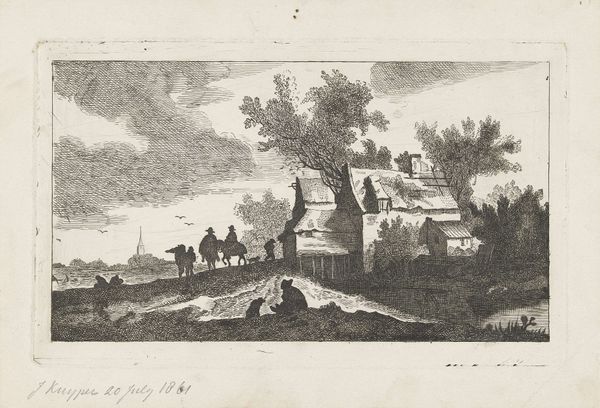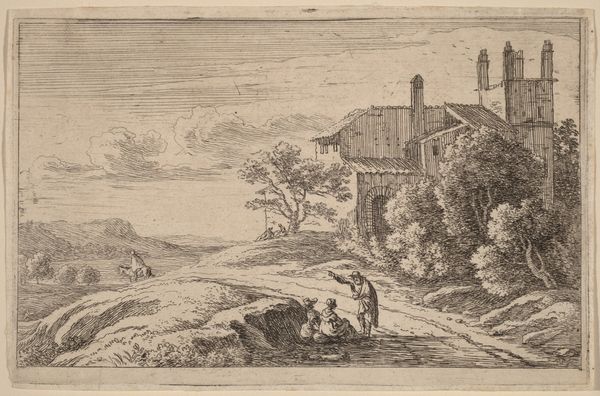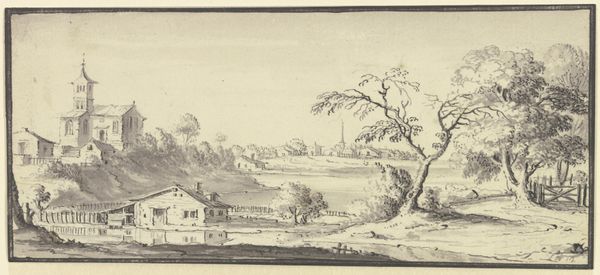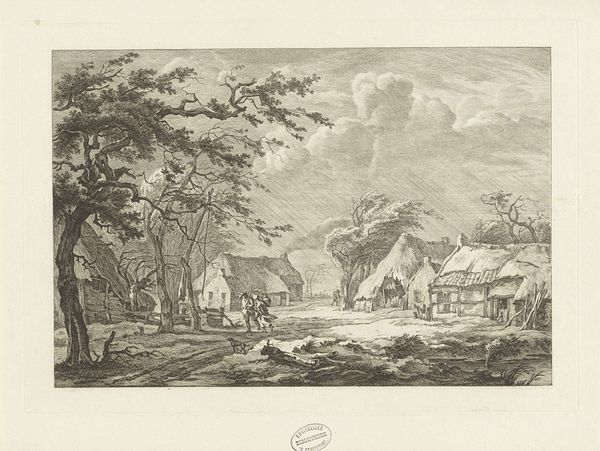
Dimensions: 8 1/16 x 10 1/2 in. (20.4 x 26.7 cm)
Copyright: Public Domain
Claude Louis Châtelet made this drawing, The Covered Bridge at Fribourg, using pen and brown ink with gray wash, heightened with white, on blue paper. The appeal of this picturesque scene lies in its precise execution. Châtelet’s careful application of ink and wash reveals the textures of the stone bridge, water, and surrounding landscape. The blue paper, heightened with white, contributes to a cool, almost ethereal atmosphere. His choice of materials – pen and ink – allows for fine lines and controlled shading, essential for capturing the architectural details and the subtle reflections on the water. The social context is significant. Châtelet lived in an era of increasing industrialization and urbanization. The covered bridge symbolizes a connection to a simpler, pre-industrial past. The figures engaged in their daily activities along the riverbank add a human element, contrasting with the imposing structure of the bridge. By focusing on the materials and process, we can appreciate how Châtelet transformed ordinary tools into a timeless scene. This challenges us to recognize the artistry inherent in these materials, blurring the lines between fine art and craft.
Comments
No comments
Be the first to comment and join the conversation on the ultimate creative platform.
